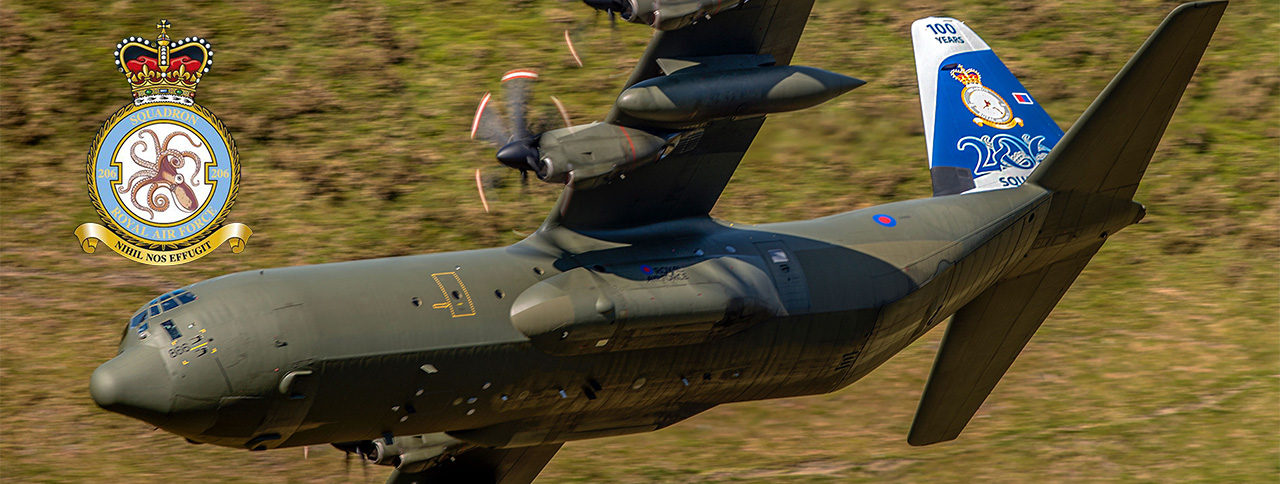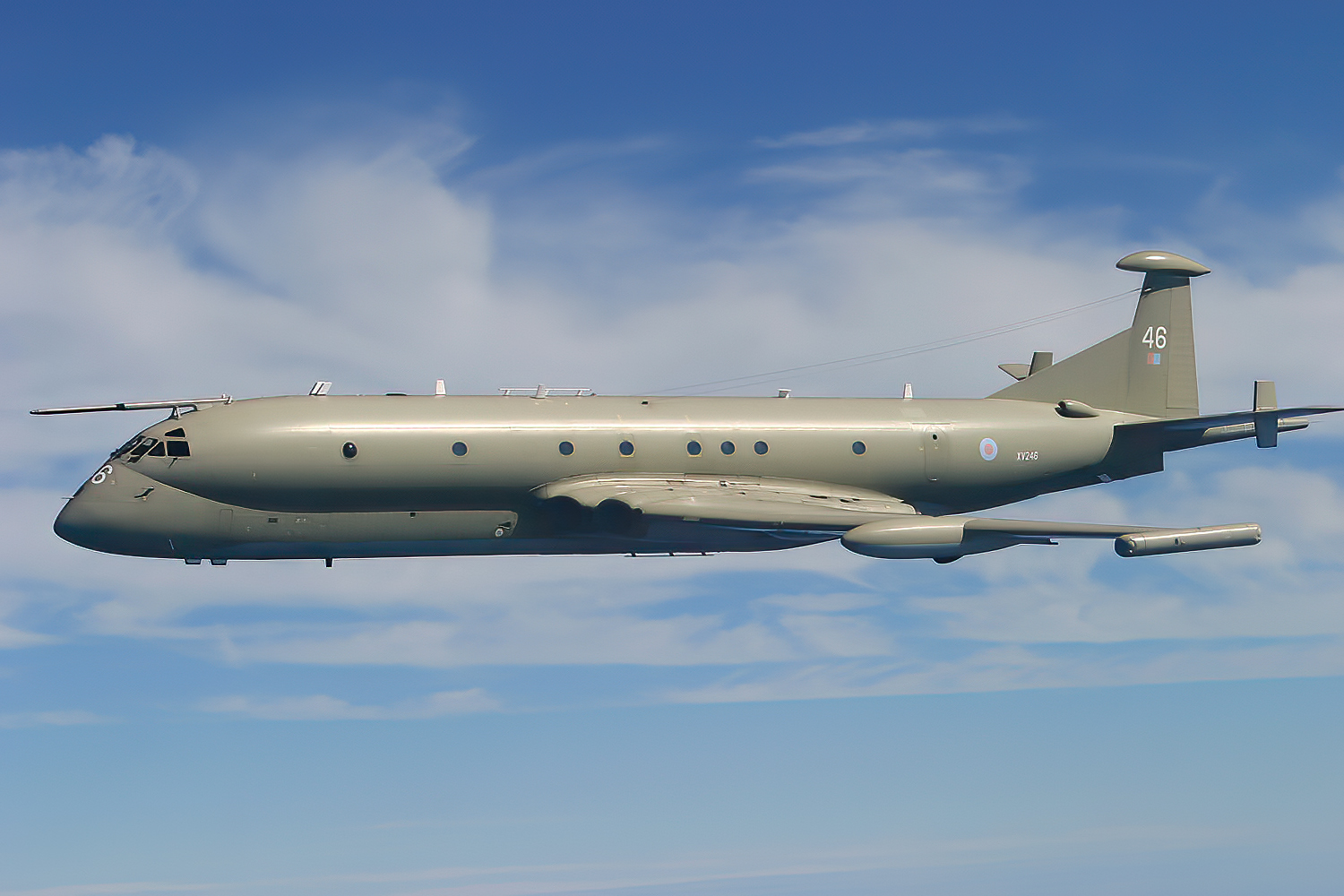Squadron Leader NRJ (Jock) Wingate
A brief flying career summary
After 5 years at the old Bathgate Academy, Jock joined the Royal Navy on 24th September 1952 as an aviation cadet, then Midshipman. After initial naval training, he was selected with others to carry out his flying training with the United States Navy at Pensacola in Florida and Corpus Christi in Texas. That adventure began with the voyage on board the Queen Mary to New York.
Basic training was in a Harvard and included his first deck landing on the USS Monterey. After that basic training in Florida, he moved to Texas. Initial training was on a T28B aircraft for airways flying skills, then it was back to Navy-style aircraft, so he flew the Grumman Hellcat, famed for its impact in the Pacific in WW2. Jet training started with the T33 Shooting Star then the Grumman F9 Panther which was arguably the best ground attack aircraft in the Korean War. Jock was awarded his USN Wings in December 1954 and returned to the UK.
In April 1955, Jock went to what was then RNAS Lossiemouth to convert to British aircraft. After a few hours in a 2 seater Vampire, he moved onto the Hawker Seahawk and then joined frontline Squadron No. 899 at RNAS Brawdy in Pembrokeshire, where he got his first taste of landing a jet on a British aircraft carrier, HMS Bulwark. Later, the squadron embarked on HMS Eagle and spent all of 1956 in Mediterranean and took part in the Suez Canal affair. On returning to the UK, the squadron was disbanded and Jock then joined a shore-based squadron (728) in Malta, where he spent an enjoyable 2 years acting as a target and ferrying Senior RN staff. By then, he was reaching the end of his 8 year short term commission and he spent his last few months at RNAS Lossiemouth flying a Meteor 7, pulling targets. He left with the rank of Lieutenant.
So Jock gave up his £1,000 navy gratuity to join the RAF as a Flight Lieutenant in November 1960. When asked his preference what to fly, he volunteered to join the V force and initially trained at Gaydon to fly the Valiant bomber. His first squadron was 207 based at Marham. After only a year, he was promoted to captain and remained as such till the squadron was disbanded in 1965. Regrettably, the Valiant developed serious fatigue and other technical problems, so personnel were diverted to other duties. Jock’s CO suggested because of his experience and ability, that he should apply to go to the Empire Test Pilots School at Farnborough, which he joined in 1966. In his time there, he won the Hawker Hunter Trophy for producing the best Preview report on a Vulcan bomber and he then left to join the Maritime Test Squadron at Boscombe Down as a brand new qualified test pilot.
During his time at Boscombe, he carried out many routine test flights of various marks of the Canberra, Vulcan, Victor and Shackleton. The first Nimrod prototype first flew in May 1967 in the hands of “Cats Eyes Cunningham” and had a few problems. As a result, Jock was unable to carry out a Preview Assessment until December 1967, when he discovered many more problems. Nevertheless he collected the prototype from Woodford and brought it back to Boscombe for the formal Test programme. Meanwhile, the production aircraft were ready for collection and were used for navigation assessment, and weapon and sonorbuoy release tests. In the summer of 1969, Jock took the prototype (XV128) to Edwards Air Base in California for hot weather performance measuring and on his return, the Nimrod Mk1 was formally released for service in the RAF.
Jock’s experience with the new aircraft led to monitoring and advising the new crews. Nevertheless, it was with initial reluctance that Jock left Boscombe Down to be posted to RAF Kinloss in January 1970. His first job was to check the construction and installation of the two Nimrod Simulators. At that stage, although he had considerable experience of the plane’s handling and performance characteristics, he knew little of the art of detecting and tracking submarines, so after a couple years, he was sent off to St. Mawgan to learn the tricks of the trade, after which he returned to Kinloss to become first pilot to a Navigator Captain. As his experience grew, he got his own crew. During the 70’s, the Cod War with Iceland was at its height the Nimrods carried out many long patrols to track and report the position of Icelandic gunboats to British trawlers and Royal Navy frigates; other patrol reporting involved photographing all foreign fishing boats detected in UK waters. Additionally, of course the Cold War was at its height and encounters with Soviet warships, submarines and aircraft were a daily occurrence.
At the end of the 70’s, Jock left 201 Squadron and was promoted to Squadron Leader and formed the Kinloss Standards Unit for the routine examination and training of Squadron crews and also, having already been the Chief Air Display Pilot, was also responsible for the training of suitable candidates for this discipline. In 1981, he was awarded the Air Force Cross in the Queen’s Birthday Honours List. 1982 saw the Falklands conflict. Jock was sent to augment No. 206 Squadron, now equipped with the MK2 aircraft. The first requirement with an in-flight air to air refuelling capability and train suitable pilots to perform this operation by day and night. By early May, training was completed and Jock flew the first nonstop sortie from Kinloss to Ascension Island in the South Atlantic with an air-to- air refuel from a Victor tanker somewhere over the Bay of Biscay. Jock flew several non-stop flights between Kinloss and Ascension Island to ferry new aircraft that had been modified to carry Harpoon air-to-air ground missiles, Sidewinder air-to-air missiles for self-defence and “iron bombs” should more bombing sorties akin to the previous Vulcan raids be required. Thereafter, Jock and his crew concentrated on daily patrols on a 400 mile radius of Ascension to ensure that the integrity of the island was maintained. He then returned to Kinloss and was delighted to learn that the crew had been selected to represent the RAF in the annual anti-submarine competition to be held in New Zealand .So in October 1982, they set off (carrying out the task of in-flight search and rescue cover for HM Queen who was on her way to Brisbane to open the Commonwealth Games) and so on to Zealand. They did not win but had a great trip. Returning to Kinloss, Jock left 206 and formed a new Nimrod trials crew, carrying out various sorties trialling new radar operating techniques and involving new computer software.
All good things eventually come to an end. On day the Station Co called Jock in to break the news that he had come to the end of his frontline flying and that he was to go to the Northern Maritime Region Headquarters at Pitreavie Castle near Dunfermline as a an Operations Controller. As a “peace offering” he offered Jock a no-frills sortie to Andoya in the Lofoten Islands north Norway begging him not to spend too much of the Queen’s money entertaining his crew….which, needless to say Jock ignored.
So that was the end of his RAF career but he was kept on at Kinloss, in civvies and on the MOD payroll, as trainer on the simulators until that too came to an end. Having had a fine yacht, “Heart of Gold” and had the necessary qualifications, he went on to pilot a tourist vessel in Inverness waters for a while.
I can think of no better tributes to my brother Ranald’s life and career than to give you the two following recent entries in the 206 Facebook
The first is the entry my son Fraser, made intimating Jock’s death
“It is with a feeling of profound sadness, tinged with a sense of overwhelming pride, that I have to inform you that my dear Uncle, Squadron Leader, Ninian, Ranald James Wingate, aka ‘Jock’ passed away last night 24th July 2023. Jock lived a great life, had a heart of gold. He was always my hero and our family will miss him enormously. The world has just lost one of the good guys”.
The second entry, is one of many responses, is from Air Commodore Stephen Skinner who wrote
“Jock was a real character whose knowledge and understanding of The Mighty Hunter was legendary. And he scared the hell out of me every time I went in the sim with him”.
Finally Ranald, job done! Off task, Blue Skies. God Bless
So that’s the end of the first and formal part regarding Ranald’s professional career but I have a wee bit more to say on a personal level. Firstly to thank nephew John Shaw for digging out Jock’s flying history which I have used.
Firstly I am sure you are wondering about Jock’s very proud name Ninian Ranald James. Our mother was artistic, romantic and religiously inclined…to this day we don’t know why he was given those titles, was always Ranald at home and school. However as many of you will have experienced, as soon as you join the services, you are Jock, like “Paddy” or “chalky” or “spud”. I was “Jock” as soon as I walked in the door of RAF Cardington in 1955.
At school Ranald did well. Always had a bonny lass at hand and always ignored my puerile presence. After gallivanting off to the Navy and my own career movements for many years after, it was birthday and Xmas cards and inevitably few actual meetings because of distance logistics. However as we aged a bit getting towards retirement, we got closer again and had the freedom to meet up either at my place in Stafford or sister Margie’s in Bathgate or at one of the 206 or 207 Squadron reunions. He and I had many a good “drinky poo” with attendant hysterical reminiscences into the wee small hours.
Just at the start of the Covids crisis, Margie’s husband Duncan, minister of St. Johns in Bathgate took ill but Ranald and I were able to get there to see him in hospital and that is the last time we 3 have been together as various disabilities have entered our family’ lives. However I was able to come up to Inverness about 8 weeks ago on a recce to find my brother in a not very good way and we did manage a couple of old fashioned giggles together. The girls in Harry Gow’s bakery in Culloden and the Co-op in Balloch will miss his daily banter after seeing him regularly and helping him put his shopping in “his awfully nice car”.
There’s a lot more I could say but you have been very patient so I will finish but not before thanking out retired RAF chaplain “Andrew”, our piper “Barry” who was a crew member of Ranald’s in 206 to old friends in 206 and 207 Associations for their kind words and Sarah from the funeral home who has been a great help in organising this day. Some years ago my golf club entertained a club from Munich…we had haggis and drams and a lot more. The German Captain, responding to my welcome said in German “everything comes to an end…except a sausage, which comes to two”….who said the Germans don’t have a sense of humour?
So this is the second end!! Thank you all.

